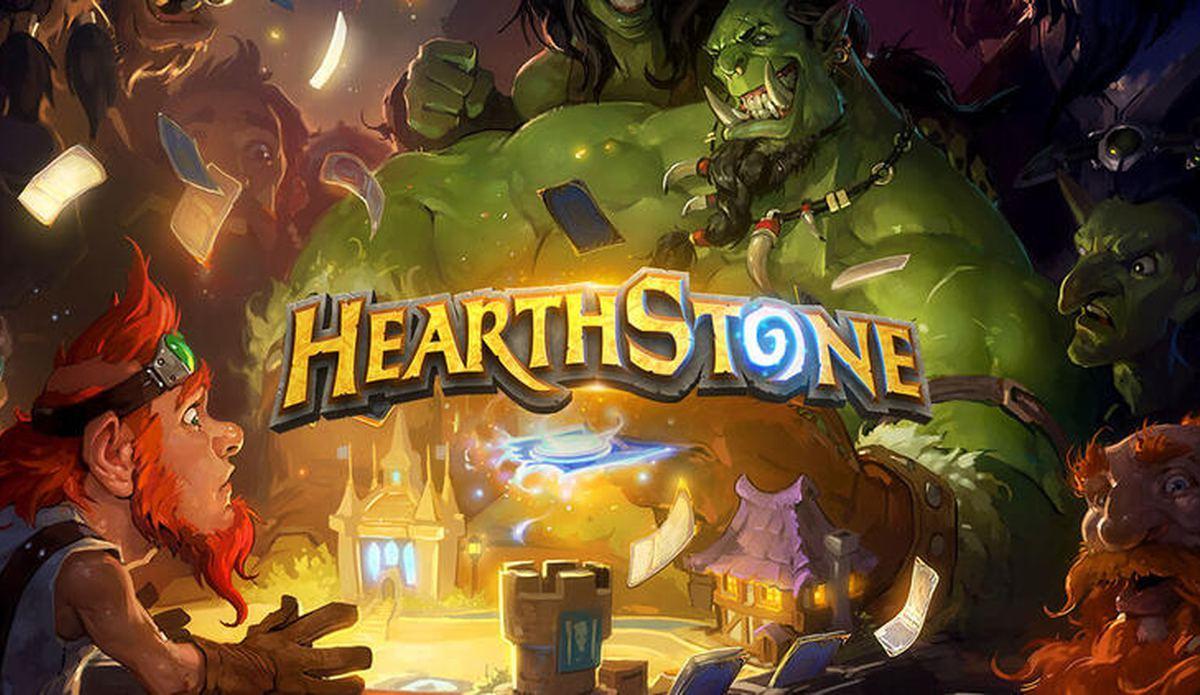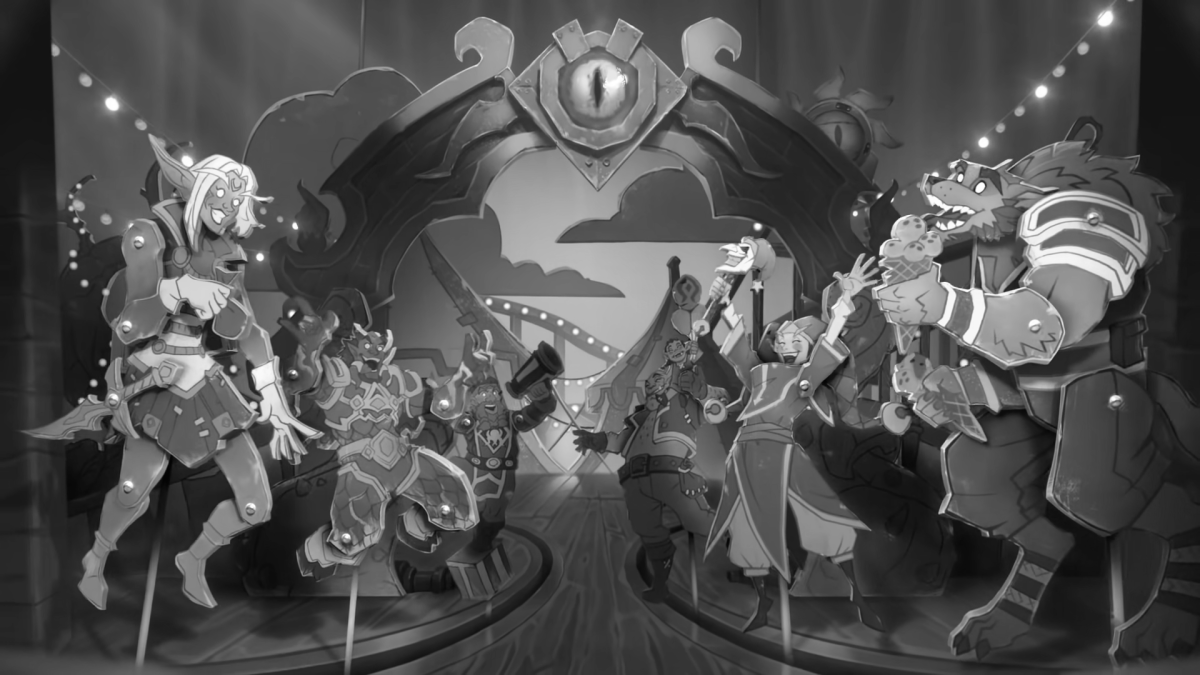Blizzard marked the tenth year of official Hearthstone esports events by significantly downscaling the competitive calendar, slashing the player count and the prize pool along the way, rendering the scene a little more than a fun pastime.
It’s easy to forget just how large an audience the game used to command, and though trends have clearly changed in esports, Blizzard’s gross mismanagement of the scene brought us where we are today, with little hope that things will improve ever again.
This isn’t the first time Blizzard choked out its own esports holdings, and as logical as it may seem to micromanage every aspect of your game’s competitive offshoots, the early days and successes of competitive Hearthstone showed us what could have been had it allowed the third-party circuit to flourish. Massive audiences and great rivalries emerged in an organic way, from the ground up; the top-to-bottom approach was never going to be compatible with it.
It took many misplays to get this far. Let’s see how we got here.
A decade of card-slinging
First, a small point of celebration. Ten years is an eternity in the gaming industry, and the fact that Hearthstone has maintained a competitive scene for this long is a testament to the game’s success, even as the global gaming market and the role of collectible games therein continued to shift. In 2014, Hearthstone was an exquisite-looking title with AAA production levels and a juggernaut in the then-nascent digital card game scene, importing predatory monetization schemes from tabletop titles without backlash while Wizards of the Coast was still floundering away with MTG Online to rake in eye-popping profits.
There was money to throw around. People don’t necessarily realize just how big Hearthstone’s esports scene got over the years. If you look at the stats on esportsearnings.com, the game boasts the eleventh-largest cumulative prize pool with $29.4 million distributed to almost 3,000 players across more than 1,000 tournaments, still ahead of Rocket League, Apex Legends, and VALORANT at the time of writing.
Big streamer personalities cheered on by excessively loyal fans created just the sort of cauldron that other competitive titles can only wish for, with affairs like the Amaz-Reynad rivalry or the meme moments of Forsen further generating interest. More importantly, third-party tournament organizers were all over the game, with companies like ESL and MTG hosting various tournaments, and others like SeatStory and Viagame still warming the hearts of Hearthstone veterans.
Blizzard then stepped on its foot, as usual. It has a tendency to micromanage and strangle its esports titles, and much like how it sidelined KeSPA in the past to bring StarCraft events under its own banner (and how it tried to wish the Overwatch League into existence from scratch), it decided to exert more and more control on officially sanctioned Hearthstone esports events, pushing out other actors from the space across the years and creating an extremely top-heavy affair.
It just wasn’t the right way to go for a game in this genre, and the team proved unable to properly care for its latest accidental esport.
Poor vision and misplays galore: How it all fell apart
There’s always this discussion about whether Hearthstone is skill-testing enough to qualify as an esport, but the win percentages required for sustained elite-level results matched or even superseded that of other competitive games—as long the tournament format was right.
The skill-testing element of card games only shines through across a large sample of games due to their inherent variance. That is not the same as saying that there is no skill involved whatsoever, and the fact that anyone can beat anyone in a single encounter is a large part of the appeal of games like this. But just consider poker for a second and the fact that there is now an entire game theory optimal approach all mathed out, and it would be ludicrous to say that the small percentages picked up by better players along the way don’t add up to something tangible in the long run.
The long run is the keyword here. The ladder provided a reasonable way to determine long-term excellence (though the final-day dashes for qualification spots were still variance-ridden affairs if also great streaming content). But the individual big-ticket tournaments all came down to something unlikely—and you can’t have decisive series come down to Ragnaros Hero Power coin flips like this, where the players kept on trying to hit the right target with their ability to deal eight damage to a random enemy over and over again.
The thing is, stuff like this is guaranteed to happen in card games, which is why many series and many tournaments were the only possible way to truly determine who’s the best.
Instead, what we got was the Hearthstone Championship Tour, a globetrotting series of top-heavy events organized by a team of 10 people, a sprinkling of LAN events held around the world. The complicated ban-based multi-deck formats meant that a casual player never got to play the way the pros did, and participants had to organize separate practice groups since they had no way to test or pilot tournament lineups in a ladder setting. This disconnect also made Hearthstone esports feel even more incidental from a viewer’s perspective.
Helmed by Che Chou, the team also wasted resources on an unimpactful collegiate program, and a concurrent, nation-based competition called the Hearthstone Global Games that never really captured the audiences’ imagination.
“Prior to this year, Hearthstone was more or less a studio production in Hollywood,” Chou said in October 2017. “One of our ambitions this year was, ‘Hey, what would happen if we took it on tour?’ What would happen if we went around to different cities and let people from that region road trip out to see a Hearthstone event and hang out for the weekend?”
Though the large events were generally well-produced (even if we never got a proper spectator client, and likely never will), a seemingly never-ending series of gaffes and controversies suggested that all this was little more than an afterthought. There were too many amateur-hour affairs to list them all here, but even a quick rundown will show the depth of issues at play.
The faulty API of Battlefy, the third-party tournament client Blizzard relied upon, allowed players to learn of their opponents’ class choices way in advance. Then there was the time when an entire playoff series was reversed due to an unproven “technical error” in a 2018 series between Akumaker and Sequinox that was never entirely cleared up.
Or how about the actual, proven cheating at 2018’s Global Games, with the players involved then invited to a future All-Star tournament? Or the time when a deck-breaking nerf coincided with HCT Seoul, revealed after the players already submitted their decks? Of course, there’s also the Blitzchung debacle: the only time the game’s competitive scene breached the mainstream media was in a scandalous fashion.
Ultimately, these affairs paint a picture of a game and a scene where playing well and doing your best in the confines of the rules won’t get you where you deserve to be, and where human error and thoughtless decisions repeatedly diminish the competitive integrity of the game. Say what you will about Hearthstone’s validity as a competitive game in terms of its design, but its esports offering was always a shambles.
Is Hearthstone an esport? Does it really matter?
If you look around in the wider gaming industry, there is still no definitive answer from the game publishers’ side as to what esports really is. Is it just a gimmicky marketing expense to run up sales for your regular content, maintained as a small side gig by dedicated members of your team and community that might blow up into something big, should the stars align? Or is there a future in the Riot way, seeing it as a viable entertainment product all by itself, marketed as the new generation of sports for a new generation of fans, worth nurturing and growing separately from the main game?
With Hearthstone, the team is clearly looking for something “sustainable”—which, as the apocalyptic FAQ of the announcement post suggests, is a very small footprint, with just a handful of events.
The jury is still out on the main question, especially in the turbulent market conditions in 2023. To quote Warren Buffett, only when the tide goes out do you discover who’s been swimming naked, and many in the gaming industry have gone the nudist route. As interest rates shot up, investor money became more expensive (and therefore rarer), obliterating optimistic business models aimed at perhaps turning a profit many years down the line after aggressively growing the business while staying in the red along the way.
To borrow the card game lingo, it meant that misplays were finally punished—and Hearthstone’s esports history was full of them, including the ill-fated YouTube deal and the poorly thought-out Grandmasters circuit.
Yet, the grassroots interest was always there, and it was still strong in 2020 when the Dragon Masters Bundle maxed out the $1.5 million additional crowdfunded tournament prize bracket in just three days. In light of this, the announcements for this year—no prize pools for Masters Tours whatsoever and just a handful of events across 2023—are a sign of gross negligence and unacceptable mismanagement, which continues even with another potential winner on the team’s hands.
Does Hearthstone need an esports scene? Is it a viable competitive game in 2023? The answer to both of these questions may very well be no. After all, this is the timeline where we got Tavern Brawl instead of a tournament mode, and where last year’s world championship final only attracted 21,786 peak viewers, the worst in the history of the competition, according to Esports Charts.
It’s tough to even envision a bright future for Hearthstone—definitely in terms of competitive play, and who knows, perhaps otherwise as well. But there can be no denying that the game had something really special going on back in 2014, with huge grassroots interest igniting high-level competition in a well-balanced game that offered something you couldn’t find anywhere else in the esports scene at the time. Many of us will miss it, but we can’t stop Blizzard from conceding the match.













Published: Feb 4, 2023 01:47 pm